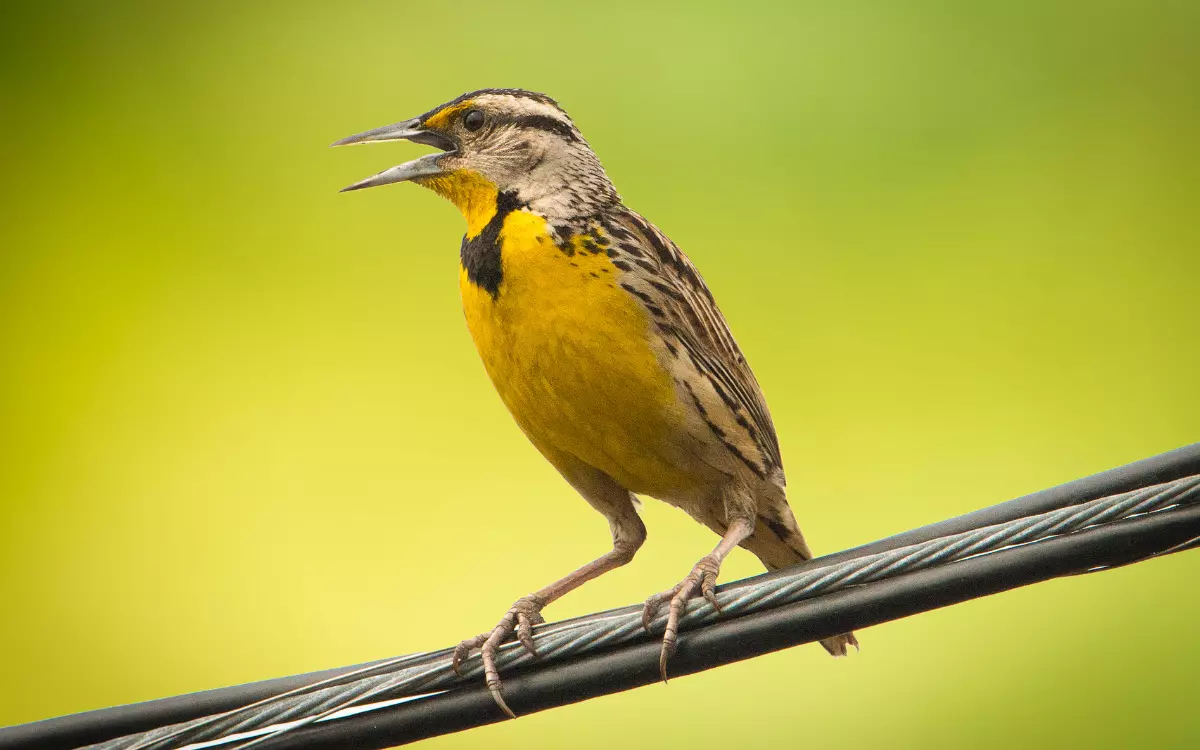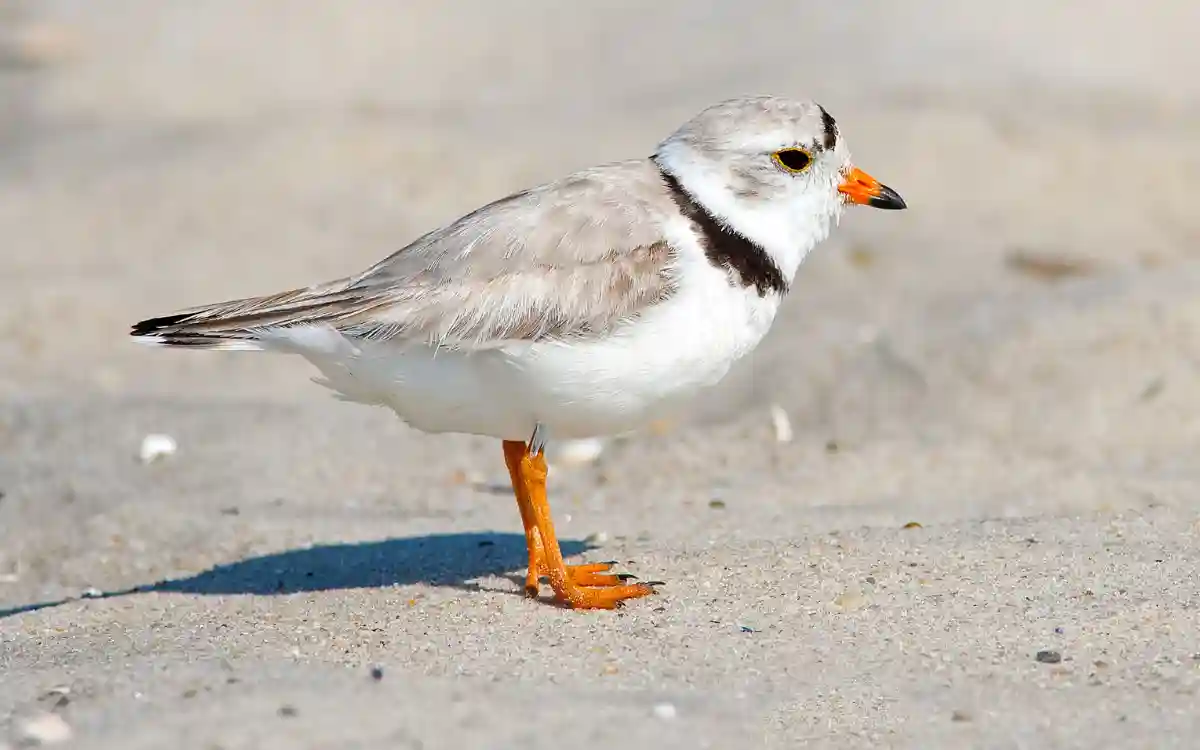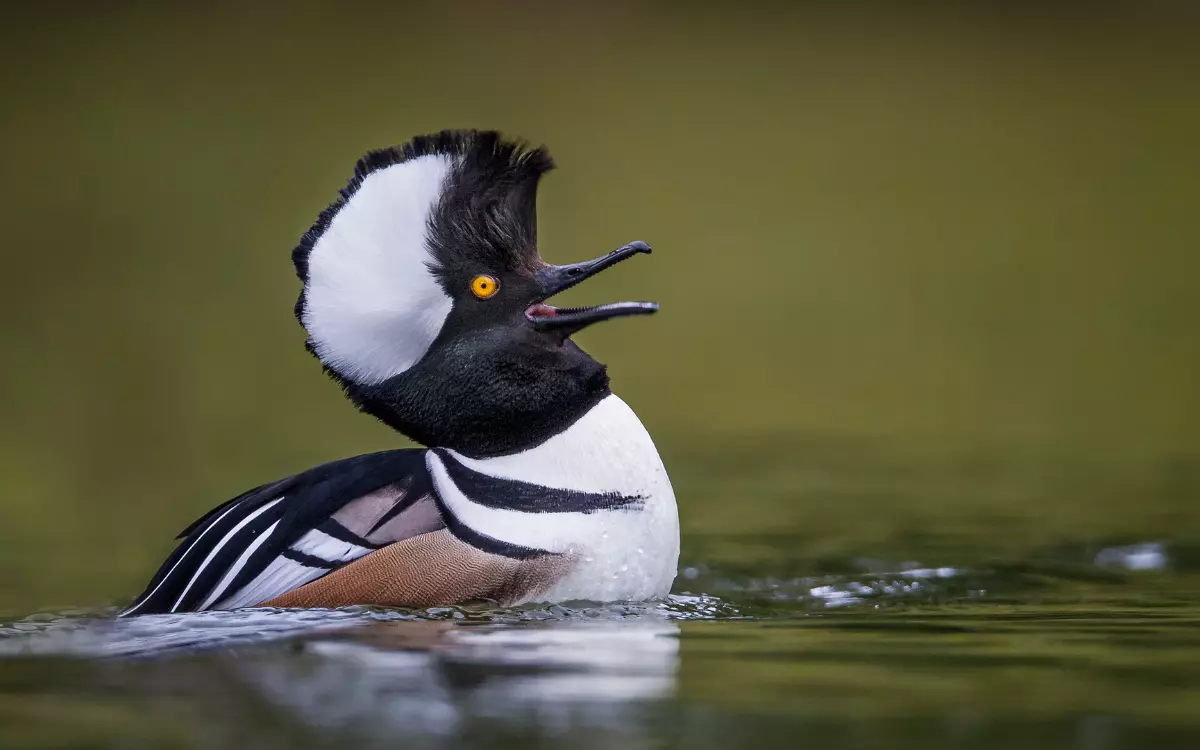12 Types of Herons in Texas (ID Guide with Pictures)
Texas is a paradise for birdwatchers, and if you love wading birds, herons are some of the most interesting ones you’ll see. Whether you’re watching a Great Blue Heron stalking its prey in a pond or spotting a tiny Least Bittern hiding in the reeds, these birds offer beauty, grace, and fascinating behavior.
In this guide, you’ll meet 12 types of herons, egrets, and bitterns found in Texas. For each species, we’ve included easy ID tips, call sounds, habitat notes, and cool facts to help you spot them in the wild.
Herons vs. Egrets vs. Bitterns: What’s the Difference?
| Feature | Herons | Egrets | Bitterns |
|---|---|---|---|
| Color | Mostly blue, gray, or brown | Usually white | Camouflaged brown |
| Neck Position | S-curved when flying | Same | Usually retracted |
| Behavior | Stalk prey quietly | Elegant, social | Shy, hide in vegetation |
| Size Range | Medium to large | Medium to large | Small to medium |
All egrets are technically herons, but birders often separate them by color and behavior. Bitterns are also herons, but they’re in their own shy category.
1. Great Blue Heron
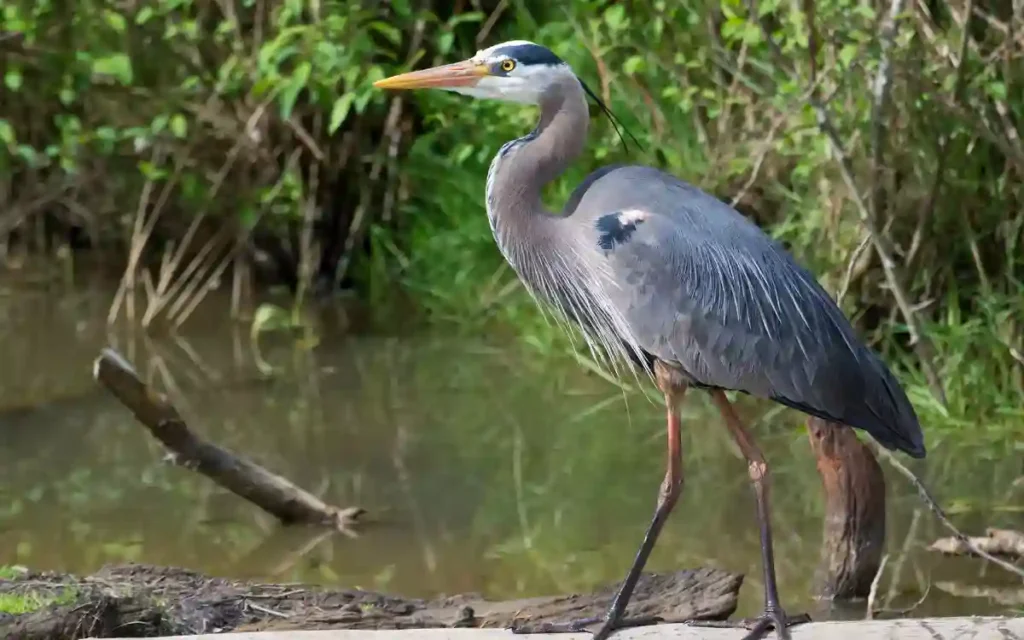
- Scientific Name: Ardea herodias
- Size: 38–54 in
- Wingspan: 66–79 in
- Call: Loud, raspy croak
- Habitat: Marshes, rivers, ponds, lakes
The Great Blue Heron is the largest heron in North America. It’s easy to recognize with its long legs, blue-gray body, and slow movements. These birds often stand still like statues before striking to catch fish. You can find them all over Texas year-round.
2. American Bittern

- Scientific Name: Botaurus lentiginosus
- Size: 23–34 in
- Wingspan: 36–50 in
- Call: Low, gulping “pump-er-lunk”
- Habitat: Freshwater marshes, cattails
This secretive bird blends into tall grasses and reeds. It’s hard to spot unless it moves. When alarmed, it stretches its neck and sways like the plants around it. A great bird to hear, but tricky to see.
3. Black-Crowned Night-Heron
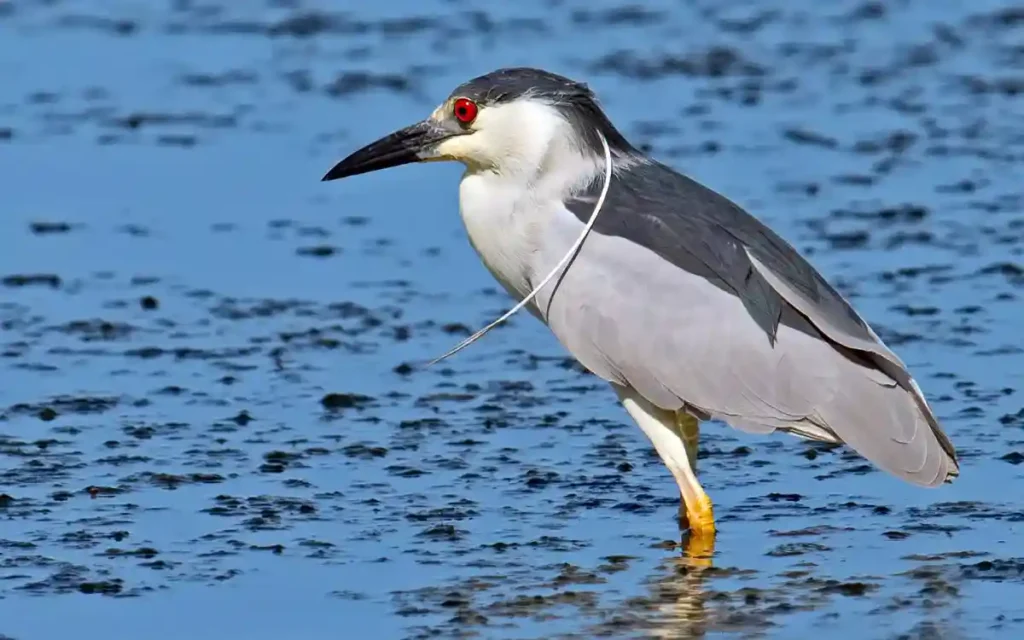
- Scientific Name: Nycticorax nycticorax
- Size: 22–26 in
- Wingspan: 45–47 in
- Call: Harsh “quawk”
- Habitat: Wetlands, city parks, lakeshores
These herons are active at dusk and during the night. They’re short and stocky, with a black cap and red eyes. During the day, they rest in trees or shrubs. Look for them around urban lakes and wetlands.
4. Green Heron
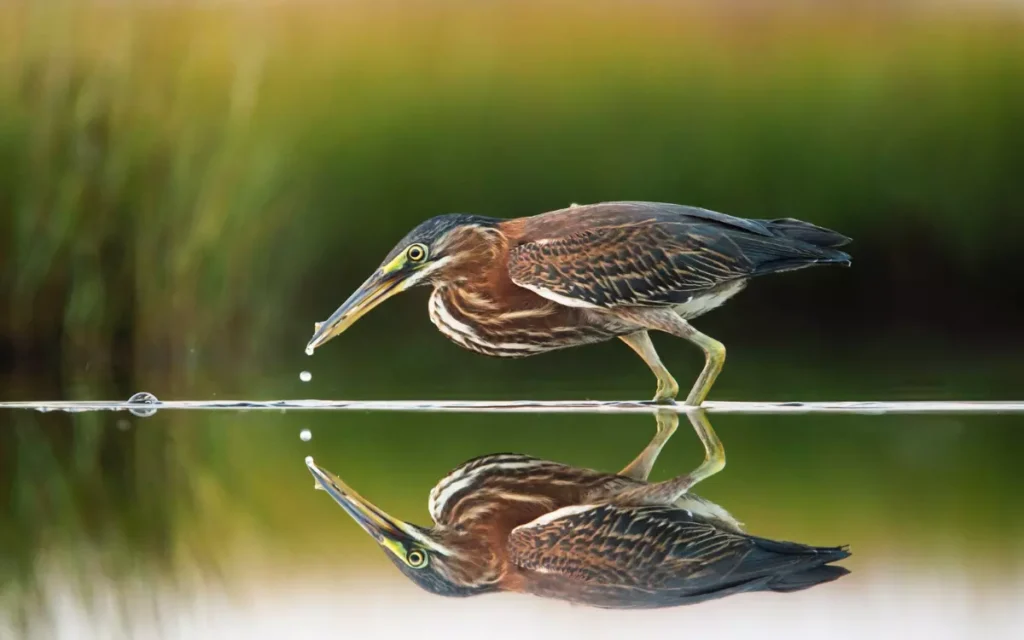
- Scientific Name: Butorides virescens
- Size: 16–18 in
- Wingspan: 25–26 in
- Call: Sharp “skeow”
- Habitat: Forested wetlands, small ponds
The Green Heron is a clever bird that sometimes uses twigs or insects as bait to catch fish. It has a dark green back, chestnut neck, and yellow legs. Watch for it along quiet streams and shady waters.
Read also: 50 Backyard Birds in Texas
5. Great Egret

- Scientific Name: Ardea alba
- Size: 37–41 in
- Wingspan: 51–57 in
- Call: Deep croak
- Habitat: Marshes, estuaries, lakes
With all-white feathers and a long yellow bill, the Great Egret is one of the most elegant birds in Texas wetlands. During breeding season, they grow long plumes on their backs. You’ll often see them standing tall and slow-walking through shallow water.
6. Cattle Egret
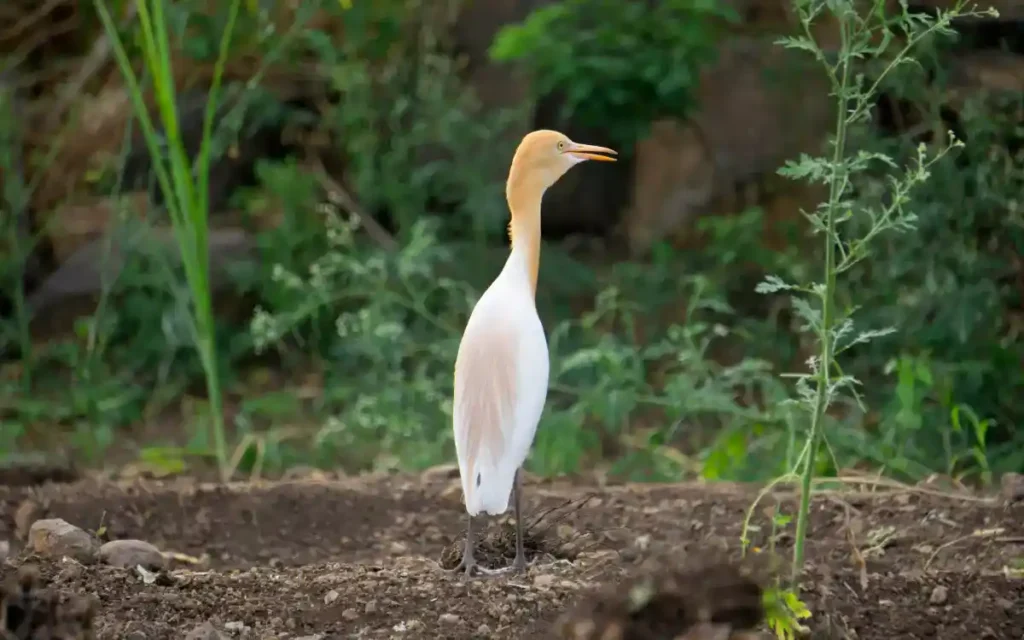
- Scientific Name: Bubulcus ibis
- Size: 18–22 in
- Wingspan: 34–38 in
- Call: Rough “rick-rack”
- Habitat: Pastures, farmland, roadsides
Unlike most herons, the Cattle Egret doesn’t always stay near water. You’ll see them in fields and near livestock, catching insects stirred up by cows or tractors. In breeding season, they get orange feathers on their chest and crown.
7. Snowy Egret
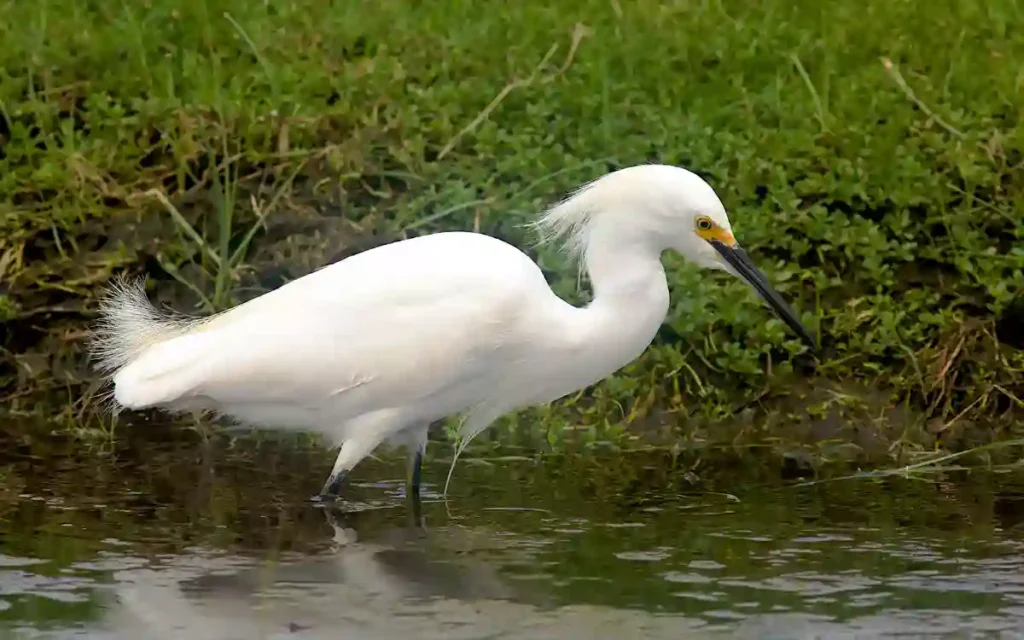
- Scientific Name: Egretta thula
- Size: 22–27 in
- Wingspan: 38–41 in
- Call: High-pitched squawk
- Habitat: Marshes, shorelines, flooded fields
Snowy Egrets are dainty and graceful. They have black bills and legs, with bright yellow feet that look like they’re wearing golden slippers. These birds often stir the water with their feet to scare up small fish and shrimp.
8. Least Bittern
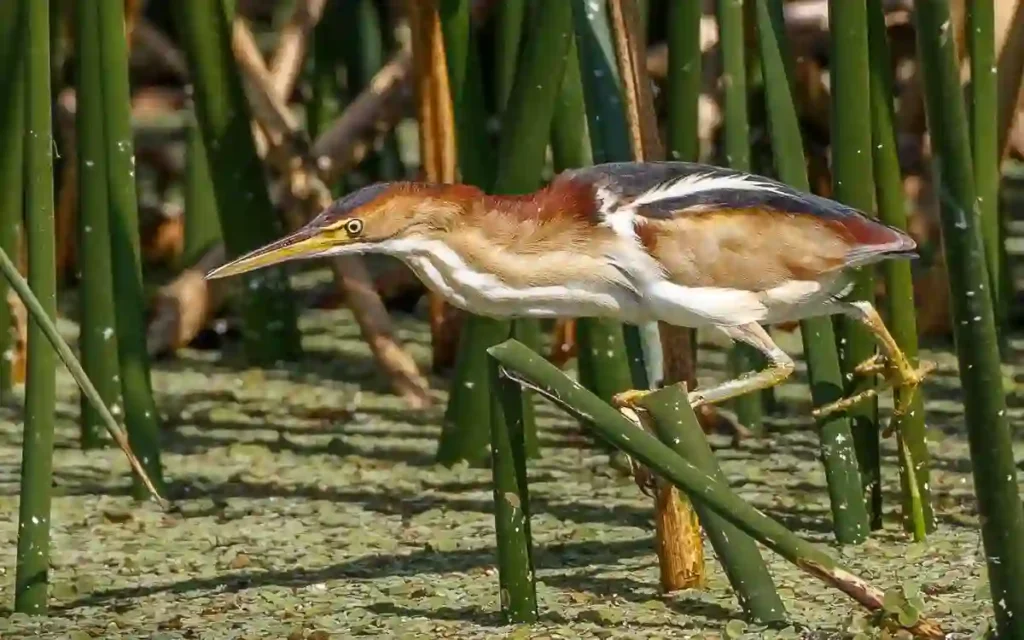
- Scientific Name: Ixobrychus exilis
- Size: 11–14 in
- Wingspan: 16–18 in
- Call: Soft “coo-coo-coo” or clicking
- Habitat: Thick marsh grasses and reeds
This is the smallest heron in North America. It’s extremely shy and often stays hidden in dense vegetation. They freeze when threatened, blending into cattails. You’ll more likely hear it than see it.
9. Yellow-Crowned Night-Heron

- Scientific Name: Nyctanassa violacea
- Size: 22–28 in
- Wingspan: 42–44 in
- Call: Short bark or “quawk”
- Habitat: Coastal marshes, swamps, mangroves
These herons have striking red eyes and a yellowish crown. They’re most active at night and love eating crabs. If you’re near the coast or bayous, keep an eye out for them around twilight.
10. Little Blue Heron
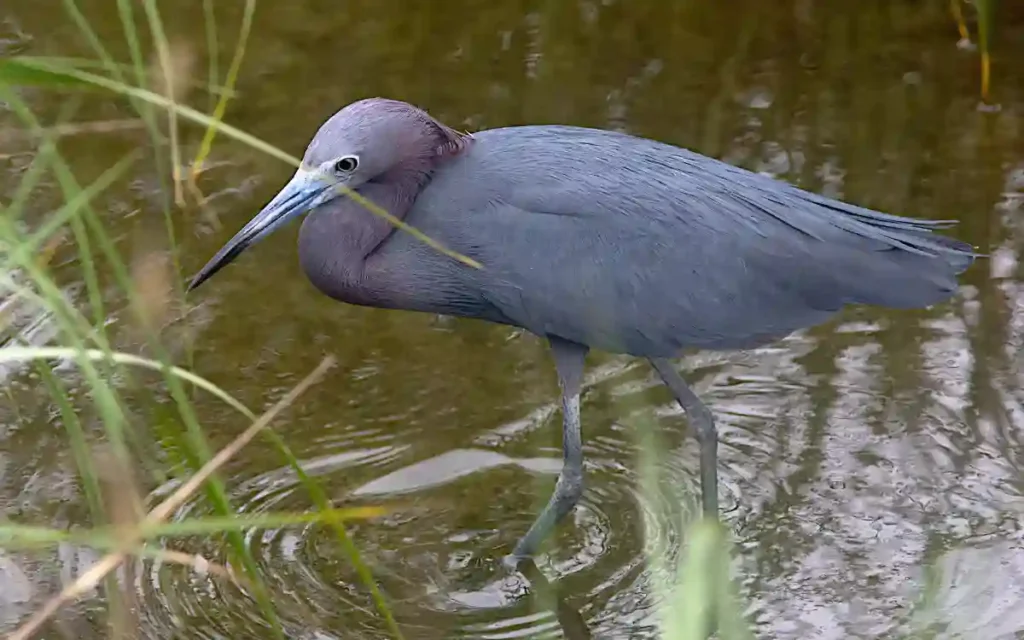
- Scientific Name: Egretta caerulea
- Size: 24–29 in
- Wingspan: 40–41 in
- Call: Quiet squeals
- Habitat: Wetlands, rice fields, ponds
Adult Little Blue Herons are deep blue-gray, but the young ones are all white. This can confuse birders, as they look like Snowy Egrets until they molt. They’re quiet, slow-moving, and graceful in the water.
11. Tricolored Heron
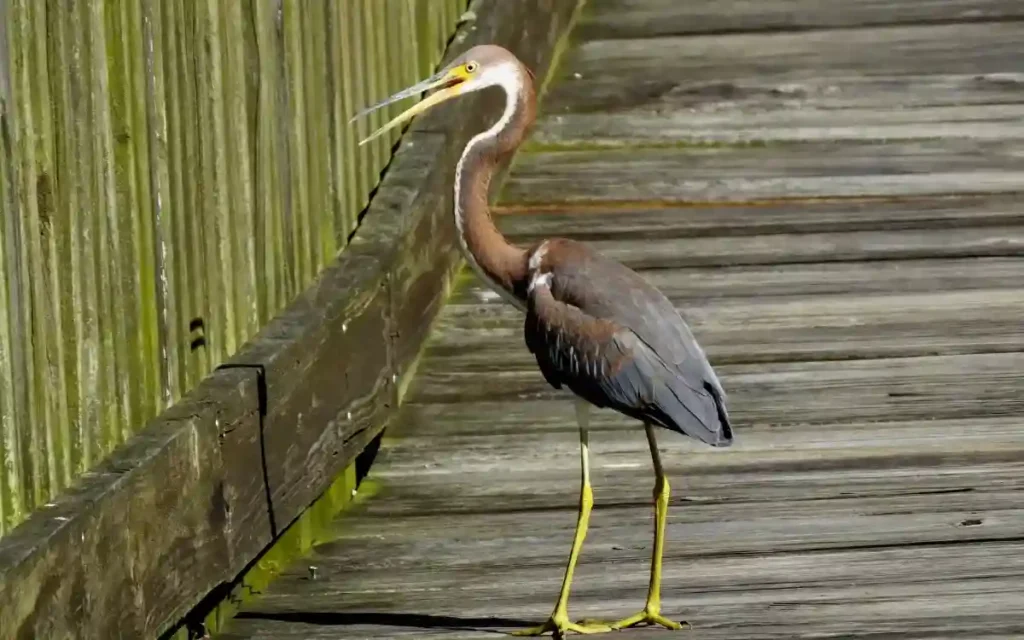
- Scientific Name: Egretta tricolor
- Size: 22–26 in
- Wingspan: 36–38 in
- Call: Soft clucks
- Habitat: Gulf Coast mudflats, lagoons, estuaries
One of the most colorful herons in Texas. It has a blue-gray body, a white belly, and a reddish neck. They’re more slender and delicate than other herons, often seen darting through shallow waters after fish.
12. Reddish Egret
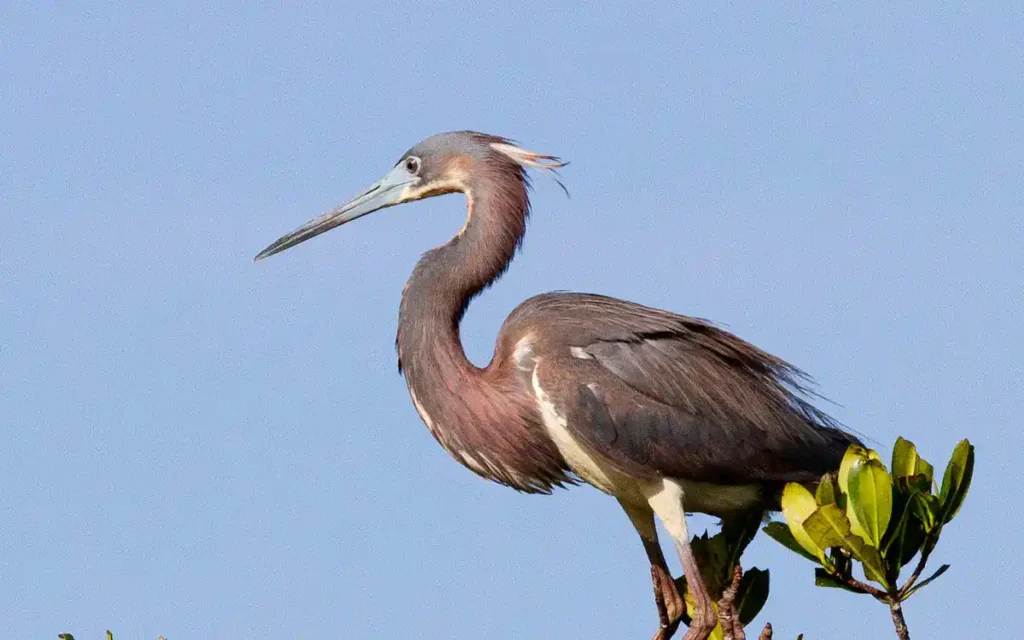
- Scientific Name: Egretta rufescens
- Size: 27–32 in
- Wingspan: 46–49 in
- Call: Guttural croaks
- Habitat: Coastal flats, salt marshes, lagoons
A rare and exciting bird to spot! Reddish Egrets often perform a “dance” while hunting—flapping, spinning, and using their wings like an umbrella to shade their prey. Their reddish feathers and bold moves make them unforgettable.
Best Places to See Herons in Texas
Texas has plenty of heron hotspots! Some of the best places to look include:
- Aransas National Wildlife Refuge – especially for Great Egrets and Reddish Egrets
- Anahuac National Wildlife Refuge – perfect for bitterns and marsh-loving herons
- South Padre Island Birding Center – excellent for coastal herons and migratory species
- Brazos Bend State Park – good year-round heron watching in freshwater
FAQs
What’s the most common heron in Texas?
The Great Blue Heron is seen year-round across most of Texas.
Are egrets and herons the same thing?
Egrets are a type of heron, usually white and more social in behavior.
When is the best time to see herons in Texas?
Spring and fall are great for migration, but many species stay year-round.
Are any herons endangered in Texas?
The Reddish Egret is considered near-threatened, mainly due to habitat loss.
How can I tell juvenile herons from adults?
Young herons often have duller colors, streakier feathers, and may act less confident.
Final Thoughts
From the towering Great Blue to the tiny Least Bittern, Texas is full of heron species waiting to be discovered. Whether you’re birding along the coast or visiting your local pond, this guide should help you identify, enjoy, and respect these elegant wetland hunters.

